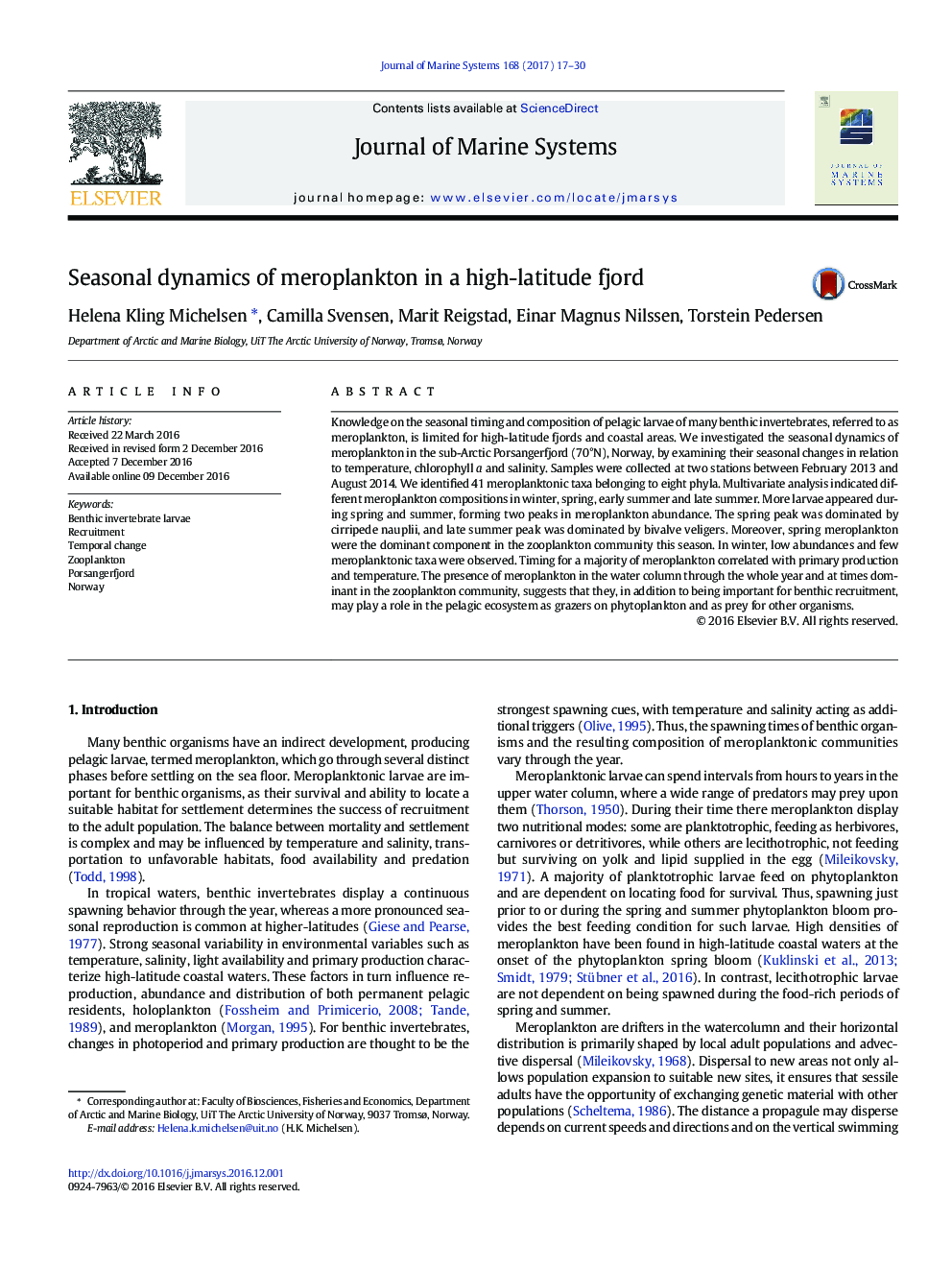| Article ID | Journal | Published Year | Pages | File Type |
|---|---|---|---|---|
| 8886050 | Journal of Marine Systems | 2017 | 14 Pages |
Abstract
Knowledge on the seasonal timing and composition of pelagic larvae of many benthic invertebrates, referred to as meroplankton, is limited for high-latitude fjords and coastal areas. We investigated the seasonal dynamics of meroplankton in the sub-Arctic Porsangerfjord (70°N), Norway, by examining their seasonal changes in relation to temperature, chlorophyll a and salinity. Samples were collected at two stations between February 2013 and August 2014. We identified 41 meroplanktonic taxa belonging to eight phyla. Multivariate analysis indicated different meroplankton compositions in winter, spring, early summer and late summer. More larvae appeared during spring and summer, forming two peaks in meroplankton abundance. The spring peak was dominated by cirripede nauplii, and late summer peak was dominated by bivalve veligers. Moreover, spring meroplankton were the dominant component in the zooplankton community this season. In winter, low abundances and few meroplanktonic taxa were observed. Timing for a majority of meroplankton correlated with primary production and temperature. The presence of meroplankton in the water column through the whole year and at times dominant in the zooplankton community, suggests that they, in addition to being important for benthic recruitment, may play a role in the pelagic ecosystem as grazers on phytoplankton and as prey for other organisms.
Related Topics
Physical Sciences and Engineering
Earth and Planetary Sciences
Oceanography
Authors
Helena Kling Michelsen, Camilla Svensen, Marit Reigstad, Einar Magnus Nilssen, Torstein Pedersen,
